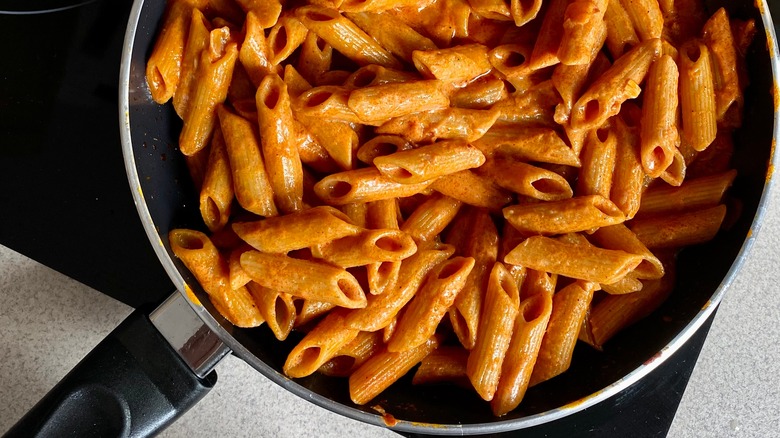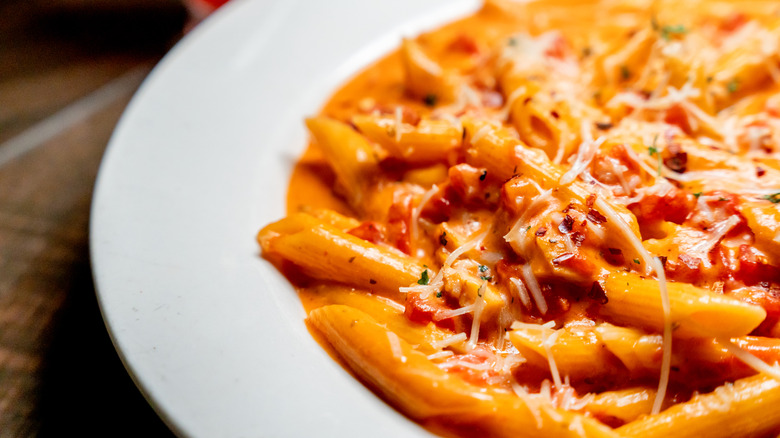Why Boiling Point Matters When Cooking A Vodka Sauce
A creamy, tomatoey vodka sauce can be heavenly when it's made right. The vodka helps add a distinct creaminess that makes this kind of sauce different from a regular cream sauce, but cooking with alcohol can be finicky. When you're making vodka sauce, understanding how alcohol interacts with heat is key to getting the perfect flavor and texture. The boiling point of alcohol (173 degrees Fahrenheit) is lower than water's (212 degrees Fahrenheit), which is why it matters when you're making vodka sauce. Because alcohol evaporates faster, cooking your sauce at too high a temperature can make the vodka burn off before it has time to enhance the flavor. On the flip side, cooking it too low may leave too much alcohol behind, resulting in a harsh taste.
To control the boiling point and achieve that perfect simmer when making pasta sauce at home, aim for a medium-low heat. You'll know you're at the right temperature when the sauce is gently bubbling, not boiling furiously. Stirring frequently can help regulate the heat distribution and prevent hotspots. You can also lower the heat gradually if you notice the sauce thickening too fast, giving you more control over how long it cooks and allowing the flavors to fully develop without rushing the process. By keeping an eye on these cues, you'll ensure your sauce has the perfect balance of flavor, texture, and richness.
The science behind simmering vodka sauce
Simmering your vodka sauce at the right temperature is crucial to unlocking its full potential. A slower cooking process allows the tomatoes to break down and the vodka to enhance the flavors without overpowering the dish. The lower boiling point of alcohol gives you more time to control how the sauce develops, letting the acidity of the tomatoes mellow and the cream blend seamlessly into the mix.
Vodka also helps release fat-soluble flavors from the tomatoes and herbs, which a simple water-based sauce might miss. For best results, you should add the vodka in a few minute before the sauce is done, rather than right at the beginning. This way, you can let it cook without letting too much of it burn off. The longer the sauce cooks at 173 degrees Fahrenheit (vodka's boiling point), the more alcohol will burn off. For the best-tasting sauce, you'll ideally want about five percent of the alcohol left in the sauce.
When it comes to serving vodka sauce, a short and tublar-shaped noodle is the best kind of pasta to pair with the creamy sauce. The hollow insides make great vehicles for the rich, thick sauce, so each bite gets a good amount.

